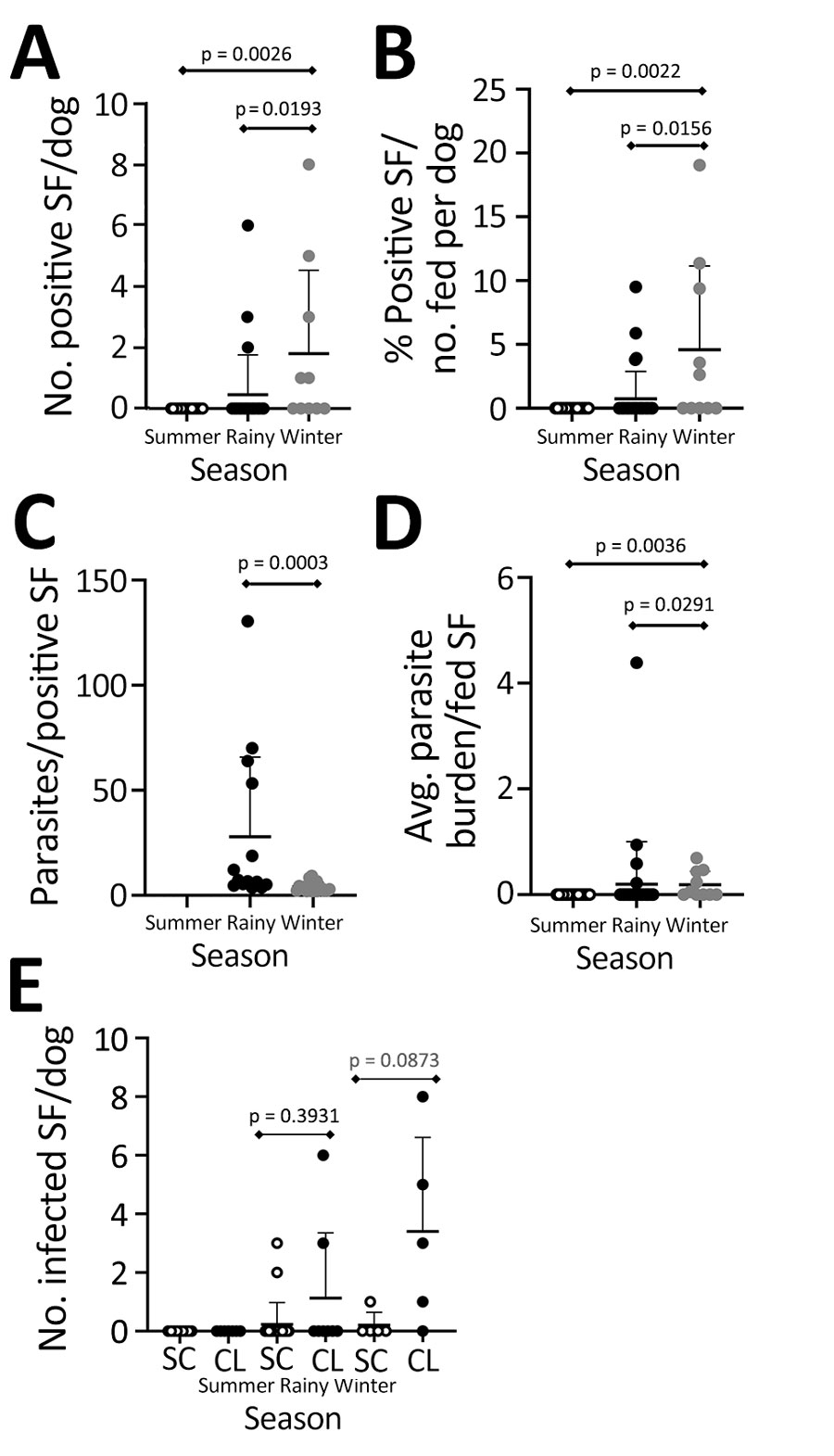Dogs as Reservoirs for Leishmania donovani, Bihar, India, 2018–2022
Anurag Kumar Kushwaha
1, Ashish Shukla
1, Breanna M. Scorza, Rahul Chaubey, Dharmendra Kumar Maurya, Tulika Kumari Rai, Shyamali Yaduvanshi, Shweta Srivastava, Gaetano Oliva, Epke A. Le Rutte, Rajiv Kumar, Om Prakash Singh, Puja Tiwary, Shakti Kumar Singh, Scott A. Bernhardt, Phillip Lawyer, Edgar Rowton, Christine A. Petersen
1
, and Shyam Sundar
1
Author affiliation: Banaras Hindu University, Varanasi, India (A.K. Kushwaha, A. Shukla, D.K. Maurya, T.K. Rai, S. Yaduvanshi, S. Srivastava, R. Kumar, O.P. Singh, P. Tiwary); University of Iowa, Iowa City, Iowa, USA (B.M. Scorza, C.A. Petersen); Kala-Azar Medical Research Center, Muzaffarpur, India (R. Chaubey, S. Sundar); University of Naples Federico II, Naples, Italy (G. Oliva), Swiss Tropical and Public Health Institute, Basel, Switzerland (E.A. Le Rutte); National Museum of Natural History, New Delhi, India (S.K. Singh); Utah State University, Logan, Utah, USA (S.A. Bernhardt); Walter Reed Army Institute for Research, Silver Spring, Maryland, USA (P. Lawyer, E. Rowton)
Main Article
Figure 5

Figure 5. Results of xenodiagnoses in a study of dogs as reservoirs for Leishmania donovani, Bihar, India, 2018–2022. Plots show dogs infect more sand flies in winter and transmit more parasites per sand fly during the rainy season. A) Number of positive sand flies; B) parasite load in xenodiagnosis-positive sand flies; C) percent positive sand flies fed on dogs; D) average parasite burden of fed sand flies; E) evaluation of infectiousness of dogs to sand flies by clinical classification and seasonal variation. Lower lever of whiskers indicate mean, upper level indicates standard deviation. Kruskal-Wallis test with Dunn’s post-test used to calculate statistical significance between groups (shown above diamond bars). CanL, canine leishmaniosis; CL, CanL clinical signs; SC, subclinical (i.e., healthy) dogs; SF, sand fly.
Main Article
Page created: October 30, 2024
Page updated: November 26, 2024
Page reviewed: November 26, 2024
The conclusions, findings, and opinions expressed by authors contributing to this journal do not necessarily reflect the official position of the U.S. Department of Health and Human Services, the Public Health Service, the Centers for Disease Control and Prevention, or the authors' affiliated institutions. Use of trade names is for identification only and does not imply endorsement by any of the groups named above.
